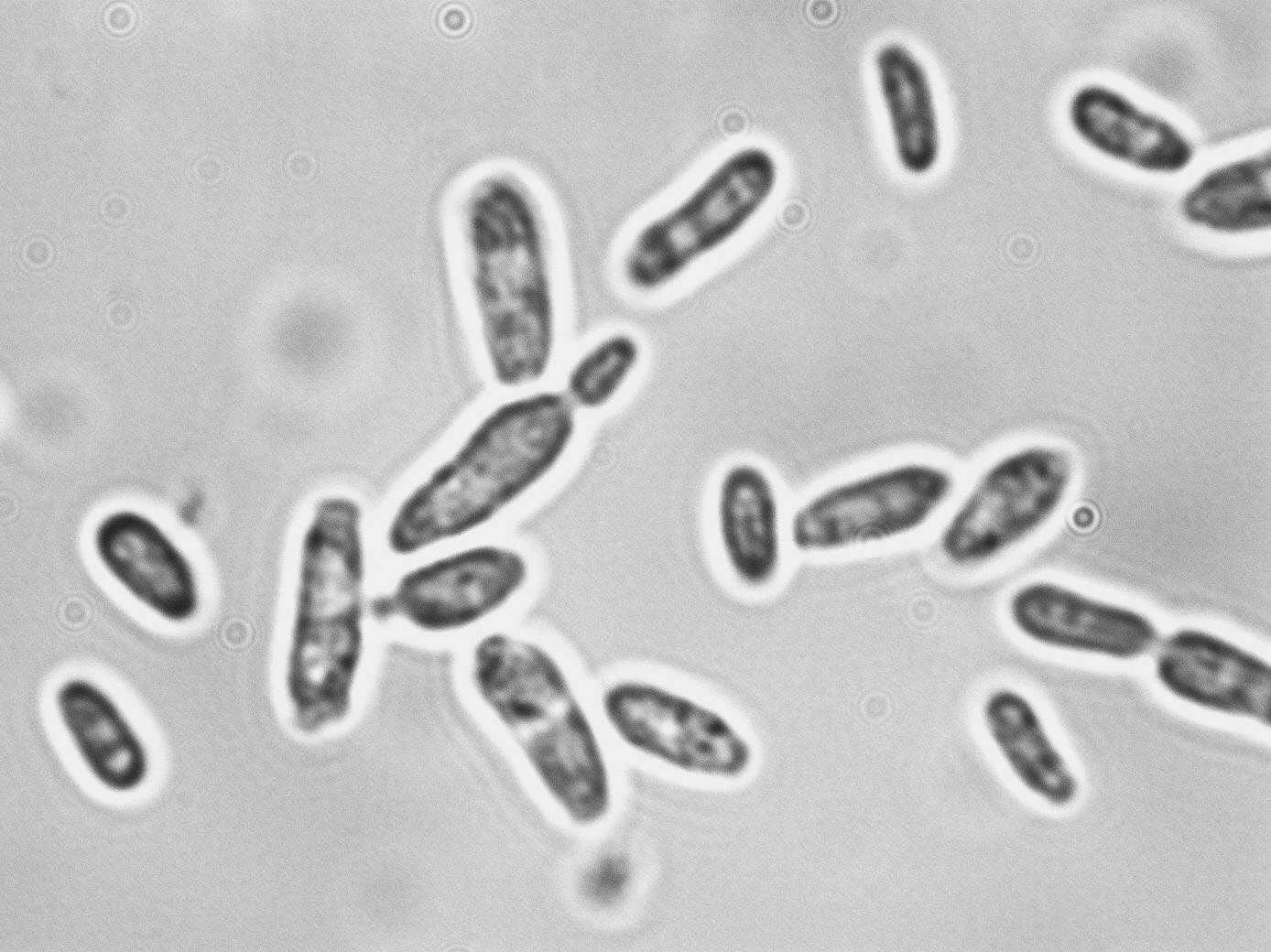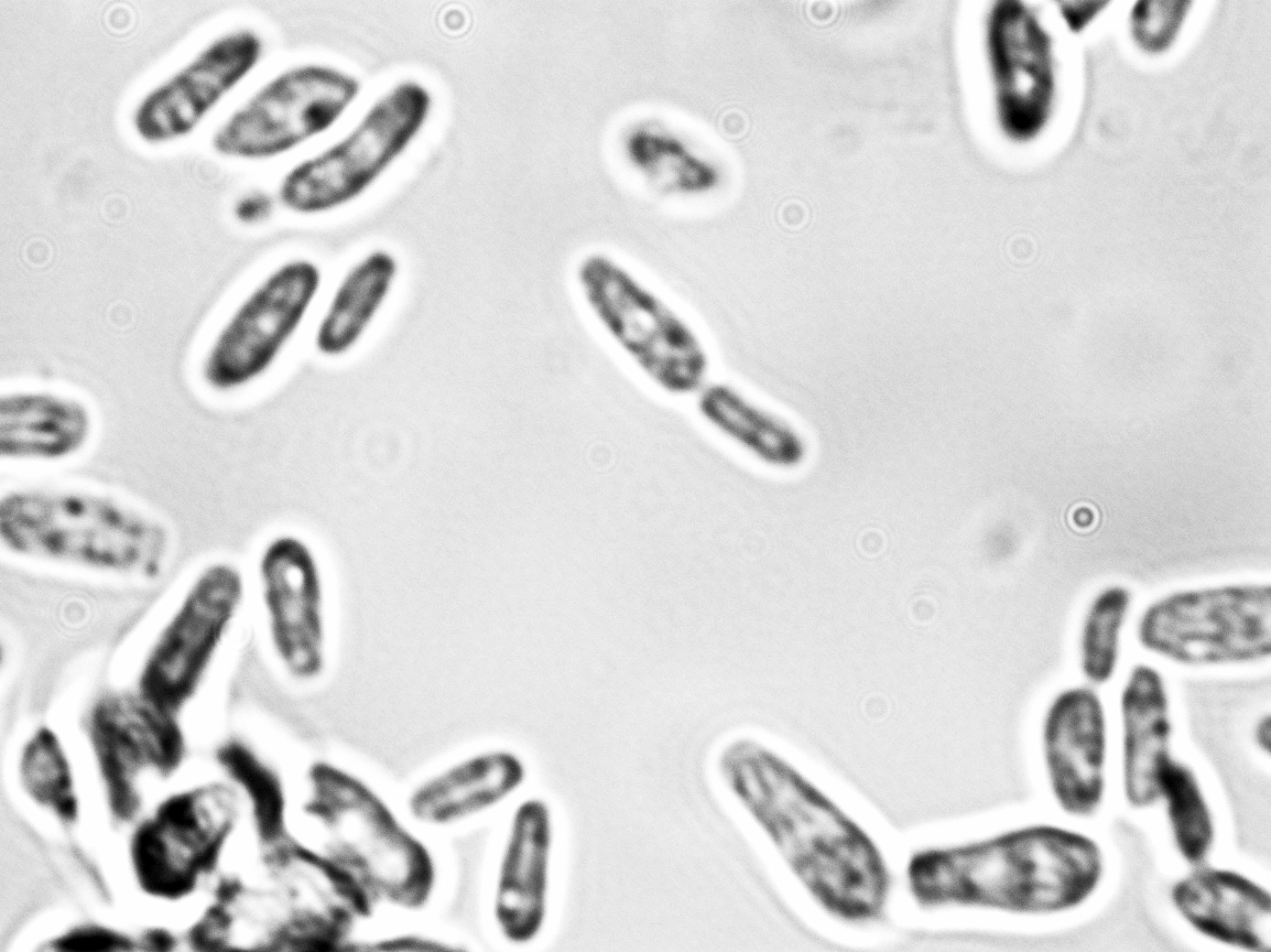Genus/species (aliases): Saccharomyces bayanus, (Formally Saccharomyces uvarum; Saccharomyces globosus, Saccharomyces intermedius, Saccharomyces heterogenicus,Saccharomyces joannae, Saccharomyces tubiformis)
Classification: Ascomycete, teleomorph
Morphology:
Cell: reproduces by budding, elliopsoid to elongate, no or simple pseudohyphae
Colony:
- Malt agar: Creamy white to off-white smooth colonies
- WL: Creamy white to off-white smooth colonies
Reproduction:
- Spore: Spheroidal and smooth
- Zygote: Diploid vegetative cell
- Ascus: typically four spores per ascus, ascus persistent
Liquid Growth: dispersed or clumpy, depending upon the strain, bottom fermenter.
 |
 |
 |
 |
Physiological Traits:
- Fermentation: Glucose, Raffinose; variable for: Galactose, Maltose, Sucrose, Trehalose, Melibiose.
- Assimilation: Sucrose, Maltose, Lactate, Ethanol; variable use of: Galactose, Trehalose, Melibiose, Raffinose, Melezitose, Mannitol, Glycerol; No assimilation of nitrate or nitrite; variable for growth in vitamin-free medium, some strains require biotin and/or thiamin
- Growth 37 C: negative
- Growth Sensitivities: some strains will grow in high glucose, not resistant to cycloheximide or high NaCl.
- Chromosome bands: 14 to 17
Ecological Traits:
S.bayanus can be found in locations remote from humans, which is not in common with S. cerevisiae. There are many strains of S. bayanus. There are five known natural remote isolates:
[MCYC623] found on the cadis fly Mesophylax in Spain.
[CCT 21-31-12] found in the Amanita citrina mushroom in Slovenia.
[UCD 51-206] fruit flies Drosophila persimiles in Yosemite National Park.
[UCD 61-137] fruit flies D. psuedoobscura in Lake Barryessa.
[NCAIMY.00789] hornbeam Capinus betulus un Hungary.
Distinguishing Features:
The karyotype pattern of S. cerevisiae is recognized by the existence of a large chromosomal band of 1600 kb as well as by three or more small chromosomes in the region of 245–370 kb. Contrastly, S. bayanus has a chromosomal band of about 1300 kb.
S. Bayanus is generally galactose negative, unlike S. cerevisiae.
Role in wine:
Involved in normal fermentation of grapes.
Sensitivities:
- SO2: No (High tolerance)
- Sorbate: No
- DMDC:
- pH: Low pH tolerant
- Acids: Octanoic and decanoic acids in conjunction with Ethanol
- Ethanol: High tolerance
- Anaerobiosis: no
- Heat: Optimal temp: 29-30ºC
References:
- Boulton, R.B., Singleton, V.L., Bisson, L.F., Kunkee, R.E. Principles and Practices in Winemaking. Springer Science. 1999.
- Naumov, G.I. H. -V. Nguyen, E. S. Naumova, A. Michel, M. Aigle and C. Gaillardin. International Journal of Food Microbiology. Volume 65, Issue 3, 10 May 2001, Pages 163-171
- Viegas, C. A., I. Sá-Correia, et al. (1985). "Synergistic inhibition of the growth of Saccharomyces bayanus by ethanol and octanoic or decanoic acids." Biotechnology Letters 7(8): 611-614.
